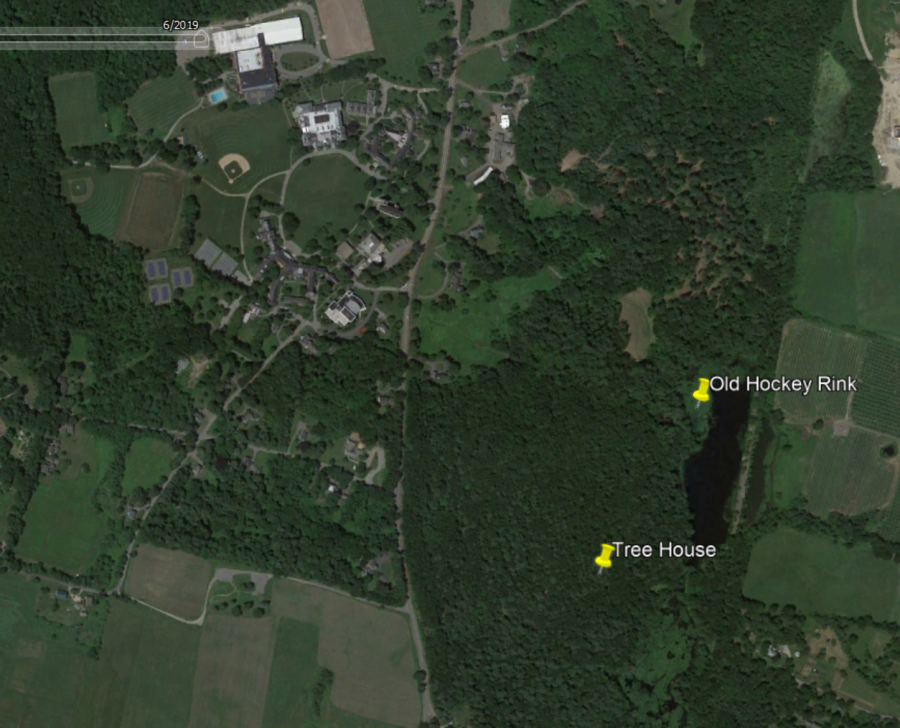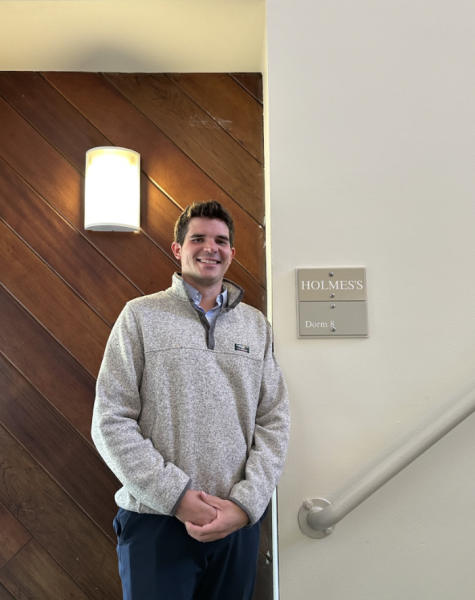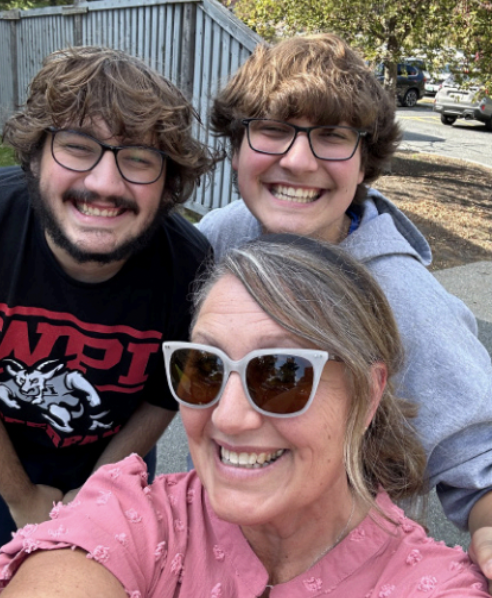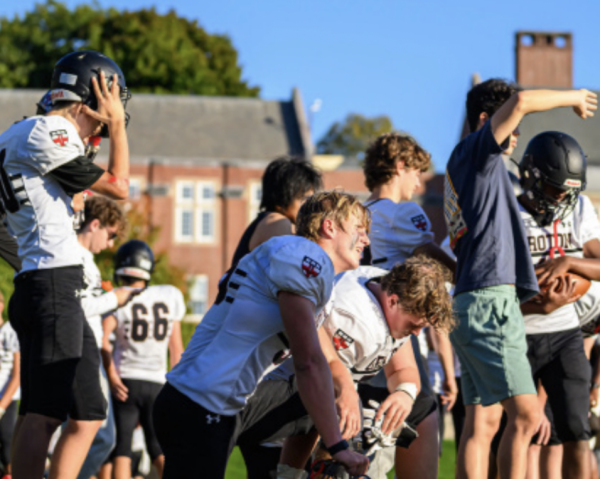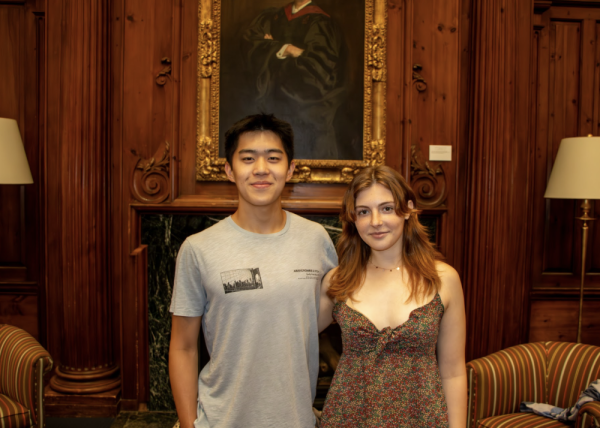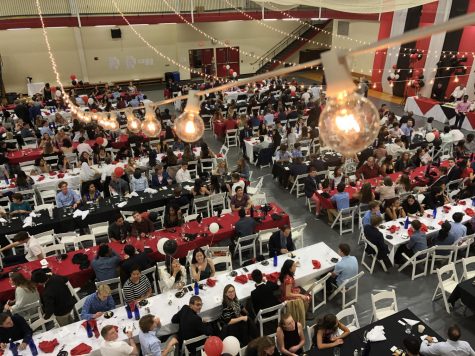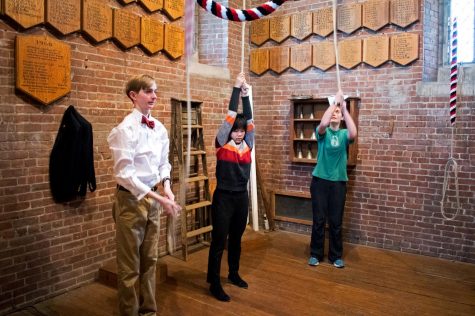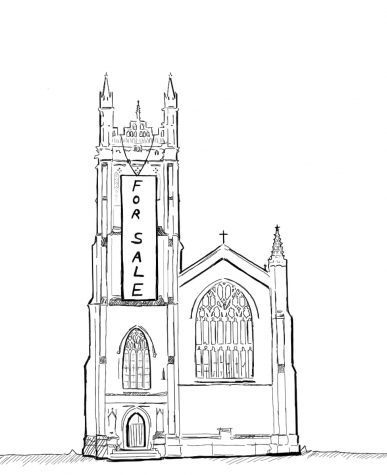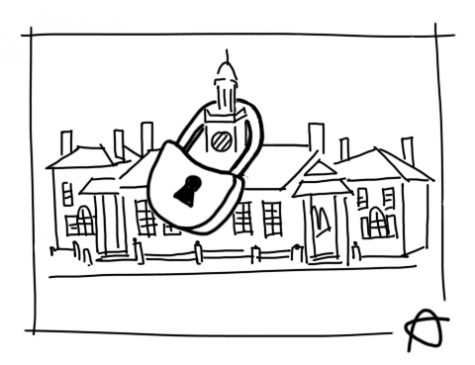The Hidden History of Groton
What locations on campus shape our community? Sixty years ago, students might’ve answered the treehouse, while Groton students during the 1920s might’ve said Lake Romeyn. Yet, many of us are unaware of these locations or their significance to the Groton community. Thanks to the help of science teacher Dr. Black ’80 and former math teacher Mr. Choate ’60, the Circle Voice has been able to piece out the hidden history of Groton school.
Built in 1972, a three-story treehouse was a social hub for all sixth formers at Groton. Nowadays, there are only a few remnants, and the story of the treehouse is passed down by word from generation to generation. When Dr. Black first started teaching at Groton 32 years ago, one could still see the timber and nails in the trees.
“Thirty years later, there is very little evidence of it. But we found old cooking pots and everything in the area. I heard stories of it as a student, everyone told me how sad it was that I never got to experience it,” Dr. Black said.
At least forty feet up in the air, the treehouse was strictly for students. At the time, sixth formers didn’t have a curfew, so the treehouse contained everything necessary for an overnight stay. A pulley system was used to bring up water, and it even had a wood stove. Capable of housing more than six students, there were rooms for people to sleep in, a kitchen, and a dining room.
The treehouse led a fulfilling but short-lived life, as it was torn down three years later. “It had to be torn down for two reasons. One due to safety concerns, and the second one is because there was no good going on there. Namely, underage drinking and marijuana usage,” said Mr. Choate.
Half a century before the treehouse, Groton students were bonding on the ice. In the mid-1920s, across the street from a 9-hole golf course, a pond was built for swimming and canoeing. That was the origin of Lake Romeyn, a small lake created by the school. One end of the lake was dammed to form a shallow portion that would become the school’s first ice hockey rink. This outdoor rink was a place for students to practice and play hockey; as well as relax and burn off steam as they gathered to enjoy each other’s company. As an ecology teacher, Dr. Black is one of the few teachers who takes his students there for fieldwork.
“The golf course was abandoned during World War II and the water in the pond was getting more polluted by then, so it really stopped being used by students. A group of beavers came in, and they built a beaver dam on top of the human dam and increased the area of flooding by a lot. If you look at an aerial photo, you can see the remains of it,” said Dr. Black.
All around campus there are sites that once shaped the Groton community, but now few are aware of Lake Romeyn and the treehouse are some of the few treasures lost in time. As students, it’s important for us to not let their legacies die.


